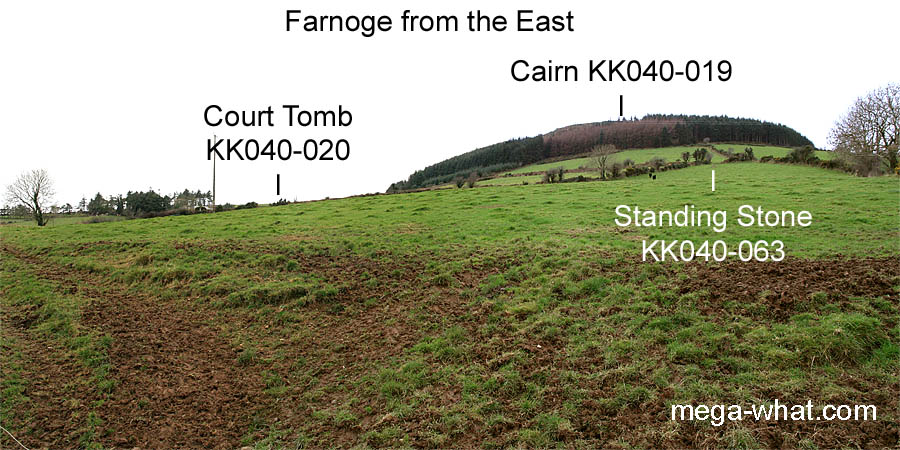 Located in Co. Kilkenny, Farnoge Court Tomb & Standing Stone are about 12km south-west of New Ross and 10km north of Waterford.
They lie on the eastern slopes of Tory Hill, a prominent landmark, accessible by footpath from further to the west.
The Summit Cairn is about a half-kilometre away as the crow flies but not easy to access from this side.
Located in Co. Kilkenny, Farnoge Court Tomb & Standing Stone are about 12km south-west of New Ross and 10km north of Waterford.
They lie on the eastern slopes of Tory Hill, a prominent landmark, accessible by footpath from further to the west.
The Summit Cairn is about a half-kilometre away as the crow flies but not easy to access from this side.

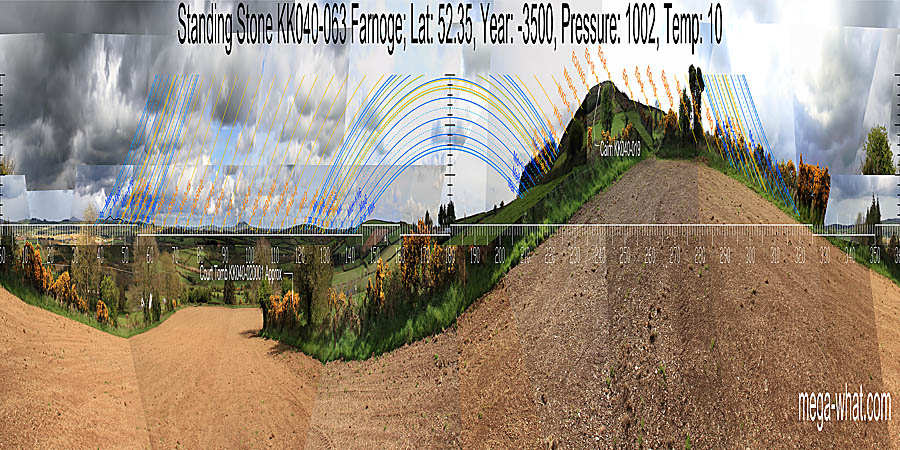 South from the Court Tomb [Pic] is a saddle, not indicated by the monument.
South from the Standing Stone [Pic] is the right side of the saddle, axially indicated.
North from the Court Tomb [Pic] is the intersect of local and far horizons, not indicated.
North from the Standing Stone [Pic] is an axially indicated
break in distant high ground, right of the intersect and left of a dip.
South from the Court Tomb [Pic] is a saddle, not indicated by the monument.
South from the Standing Stone [Pic] is the right side of the saddle, axially indicated.
North from the Court Tomb [Pic] is the intersect of local and far horizons, not indicated.
North from the Standing Stone [Pic] is an axially indicated
break in distant high ground, right of the intersect and left of a dip.
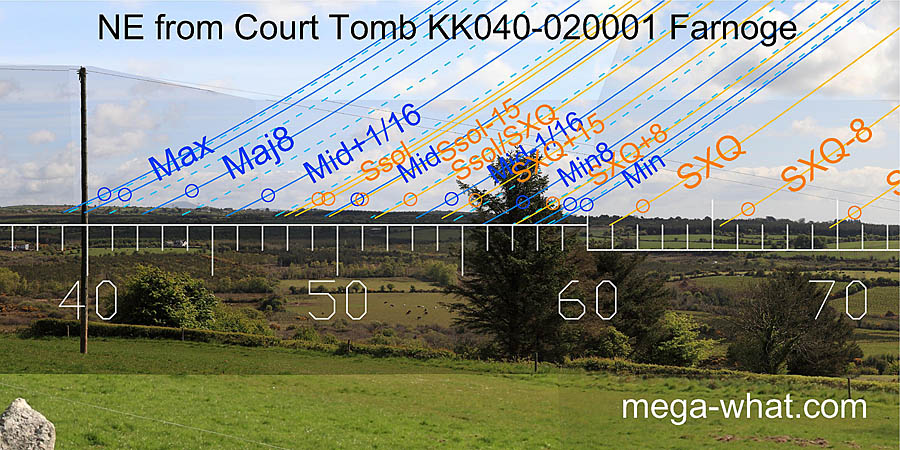
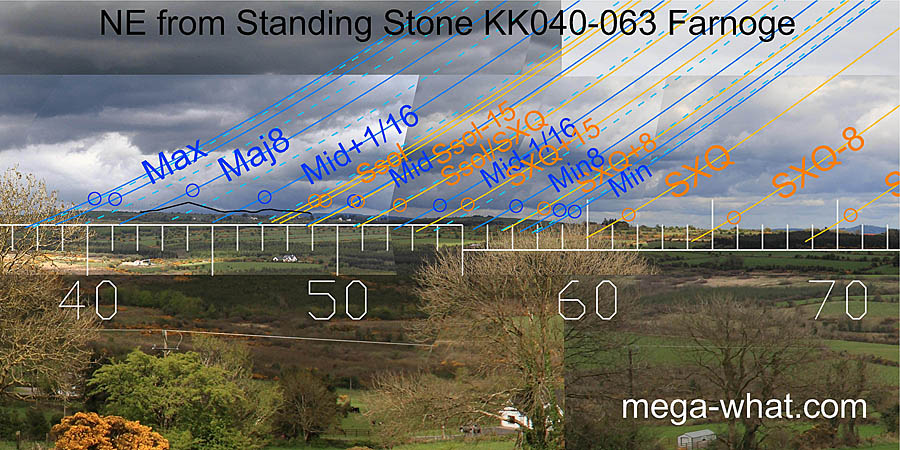 The northern Major Standstill Moonrise is at the top of a south-facing slope. The Standing Stone gives better views of distant skylines and a more usefully varied profile.
The northern Major Standstill Moonrise is at the top of a south-facing slope. The Standing Stone gives better views of distant skylines and a more usefully varied profile.
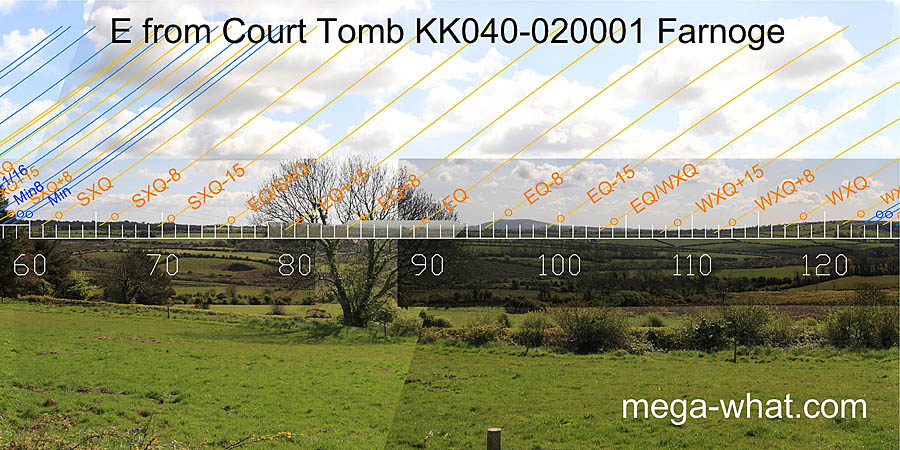
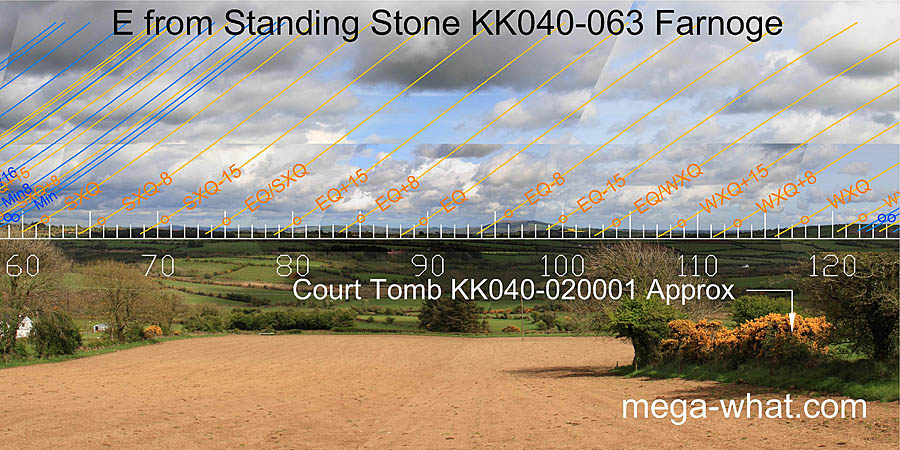 South from the Equinox, eastern views are very similar from both sites. North from the Equinox, greater observer altitude at the Standing Stone makes its position better for this quadrant.
South from the Equinox, eastern views are very similar from both sites. North from the Equinox, greater observer altitude at the Standing Stone makes its position better for this quadrant.

 South-eastwards the major standstill grazes a north facing slope and the minor standstill strains to reach a hilltop.
Between them the winter solstice is at the base of a slope. The dip is narrower and the profile slightly more varied from the Court Tomb.
South-eastwards the major standstill grazes a north facing slope and the minor standstill strains to reach a hilltop.
Between them the winter solstice is at the base of a slope. The dip is narrower and the profile slightly more varied from the Court Tomb.
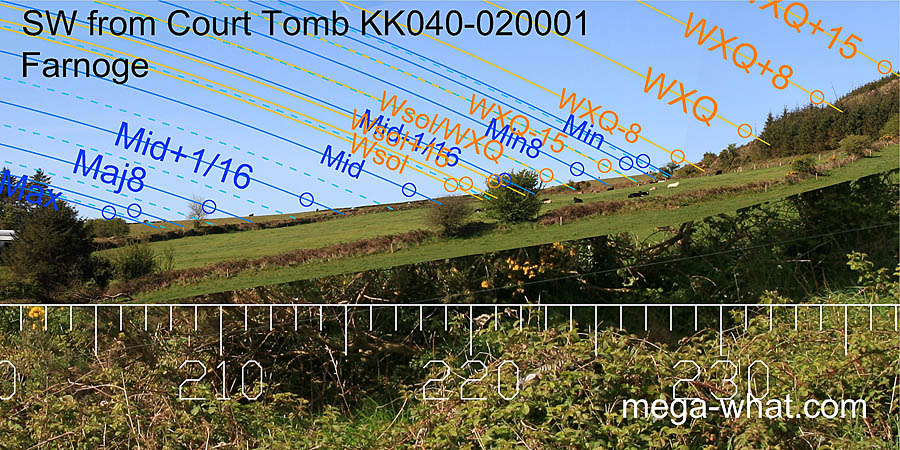
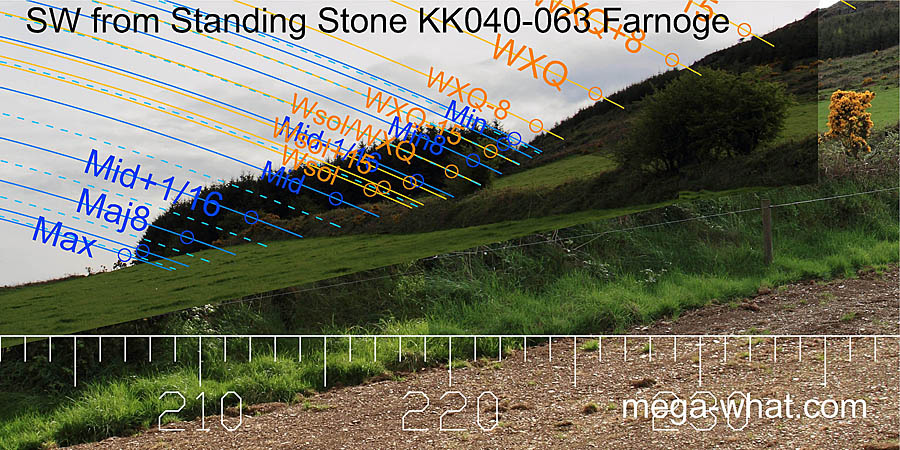 To the south-west a break in the slope marks major standstill from the Standing Stone and minor standstill from the Court Tomb.
To the south-west a break in the slope marks major standstill from the Standing Stone and minor standstill from the Court Tomb.
The lunistice range spreads over much more azimuth when seen from the tomb as it is on a shallower slope.
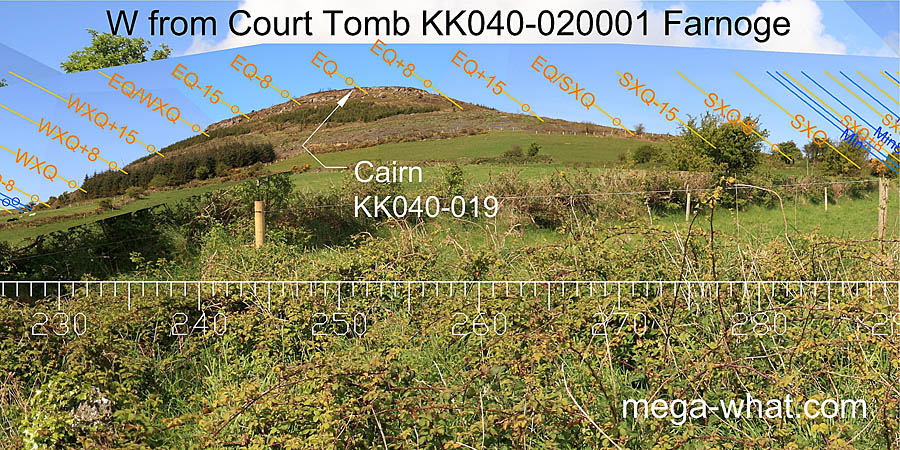
 Westwards, the Hilltop Cairn would have marked sunset on the Equinox when viewed from the Court Tomb but
a half-month before Spring / after Autumn Equinox seen from the Standing Stone.
Westwards, the Hilltop Cairn would have marked sunset on the Equinox when viewed from the Court Tomb but
a half-month before Spring / after Autumn Equinox seen from the Standing Stone.

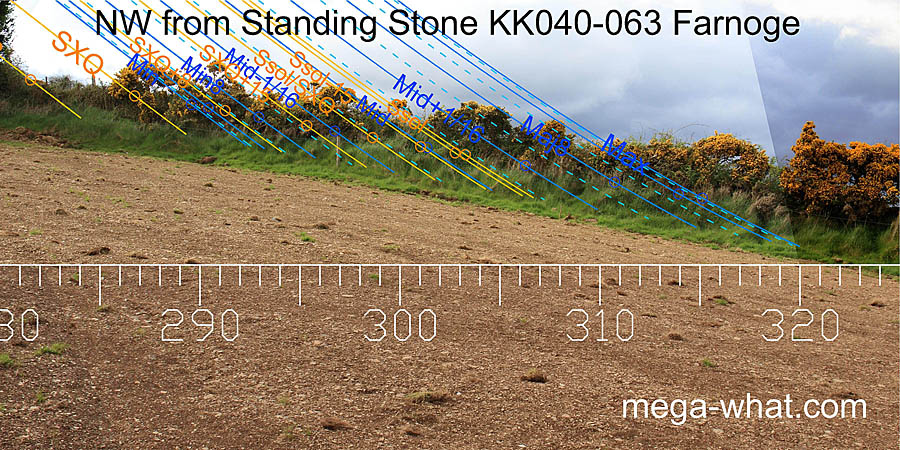 The north-western lunistice range spans a slight rise when viewed from the Court Tomb.
From the Standing Stone it is much compressed, falling on the last stage of the local slope and straining to reach its intersect with more distant horizons.
The north-western lunistice range spans a slight rise when viewed from the Court Tomb.
From the Standing Stone it is much compressed, falling on the last stage of the local slope and straining to reach its intersect with more distant horizons.
To summarise:
The Court Tomb has the better overall position.
The Standing Stone has better views to the north-east but nonethless an overall fit of luni-solar patterns to the shape of the landscape has been maintained. It also looks like it would have usefully cut the horizon when viewed from the Tomb. The Standing Stone could be a later, Bronze Age, addition to the site but it is possible that all three monuments were erected by the same Neolithic society, perhaps over several generations.
References